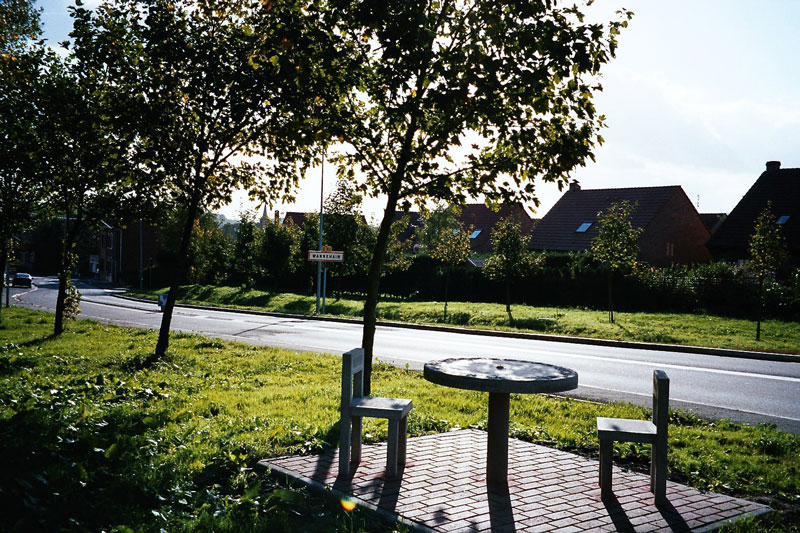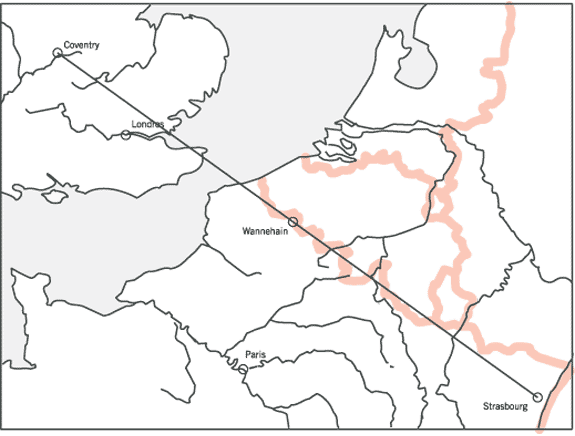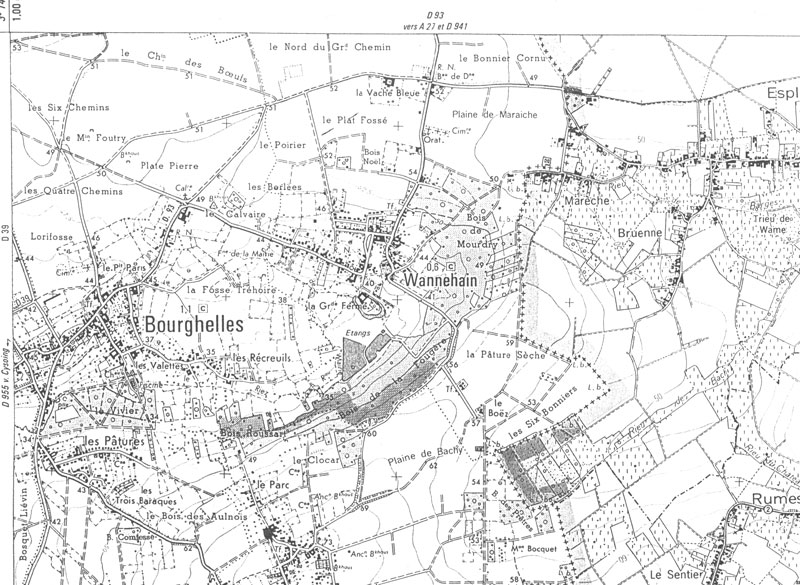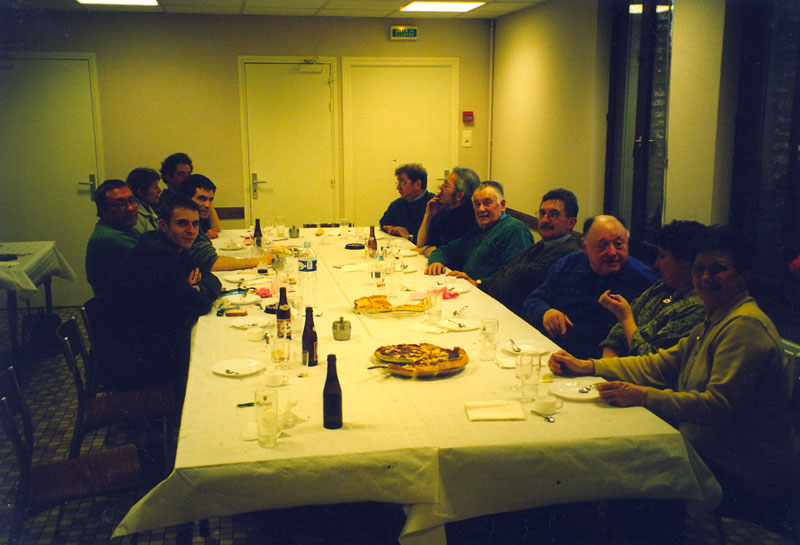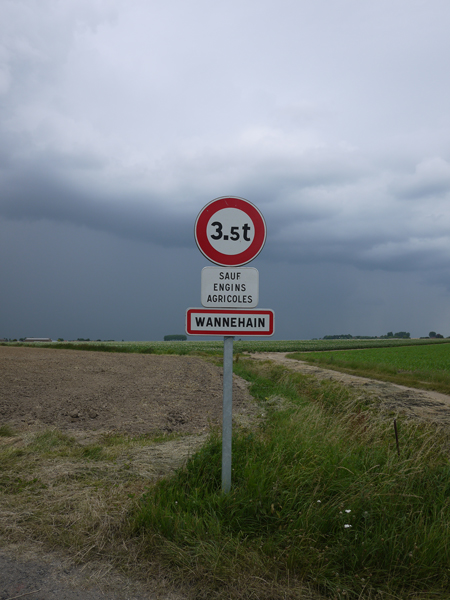
Wannehain
Parcours Wannehain is the result of a meeting, without any goal, between Nicolas Boulard and Olivier Bobichon. The point of this meeting was the center of the line separating these two persons, the first one was living in Coventry (UK), the second one was living in Strasbourg. The meeting point was located on the territory of the village of Wannehain (Nord-Pas-de-Calais). The mayor, who had been warned by mail, had organized a reception to meet the protagonists of this meeting and to ask them to materialize this (non-)event and so revalue its village between Lille, Tournai and Villeneuve d’Ascq, near the Belgian border .
Following this unlikely meeting, a permanent installation made up of tables and chairs in concrete strewn across the territory was carried out in cooperation with the villagers. These sculptures invite walkers to follow the punctuation of these tables on which different texts refer to local history (real or fictitious).
This project was realised in 2000 as part of a research at école supérieure des arts décoratifs de Strasbourg.
Wannehain
Le parcours Wannehain est le résultat d’une rencontre, sans but précis, entre Nicolas Boulard et Olivier Bobichon. Le point de cette rencontre était le centre de la ligne séparant ces deux personnes, la première vivant alors Coventry (Grande-Bretagne), la seconde à Strasbourg. Ce lieu se trouvait sur le territoire de la commune de Wannehain (Nord-Pas-de-Calais). Le maire ayant été averti, il organisa une réception en vue de s’entretenir avec les protagonistes de cette rencontre pour leur demander de matérialiser cet événement et revaloriser ainsi son village situé entre Lille, Tournai et Villeneuve-d’Ascq, à la frontière belge.
A la suite de cette rencontre improbable, une installation permanente composée de tables et de chaises en béton parsemées sur l’ensemble du territoire a été réalisée en coopération avec des habitants du village. Ces sculptures invitent les promeneurs à suivre la ponctuation de ces tables sur lesquelles différents textes font référence à l’histoire locale (réelle ou fictive).
Ce projet a été réalisé en 2000 dans le cadre d’un atelier de recherche et de création à l’école supérieure des arts décoratifs de Strasbourg.

